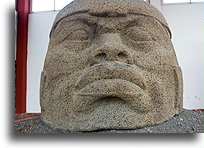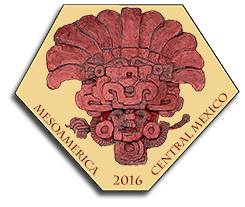Along the Coast of the Gulf of Mexico
November 16
The day before, when it was already dark, we turned off the main road in the direction of La Mancha on the shore of the Gulf of Mexico. At this time of year, it was a deserted place. All motels and camping sites looked closed. Only one restaurant was open. "Where can we spend the night here?" - I asked, "we are looking for a campsite to sleep in the car," I explained. "Nothing to worry, everything is open, but we have no visitors here," answered, as it turned out an Italian woman, the owner of an Italian restaurant as she went for the phone. Almost immediately, a local person came on a motorcycle. We followed him to a small campsite called Eco Guias hidden behind the fence and the trees. There we spent the night quietly. In the morning, after eating a traditional local breakfast, scrambled eggs with beans and tortilla, we headed further south.



Unexpectedly in one of the towns, the traffic was completely stopped. Cars did not move from the spot. We had no idea what was the cause of the delay, but quickly decided to take a chance and bypass it. It turned out that nurses blocked the road. They demanded payments under previous agreements. Fortunately, we found the right detour and in no time, we were back on the road.
Passing through Veracruz we took a break to see probably the most interesting of all the strongholds in Mexico, Fort San Juan de Ulua. The port city of Veracruz since its beginning played a significant role for Mexico. The Spanish conquistador Ferdinand Cortez founded this town in 1519. During the colonial period, this was the largest mercantile center, even wealthier than the capital itself. The legendary wealth attracted pirates. In order to protect the city, a large defensive fortress was erected.

Fortification built on the island protected not only the city, but also treasures that reached here. This was the mercantile center and the route of the wealth not only from the Mexico region, but also from the distant places like the Philippines to the west and the Spanish colonies in South America. Silk and spices from Manila, pineapple and sugarcane from the Caribbean passed through fort's storage rooms. African slaves were brought over this way to work on the sugarcane plantations. Veracruz was Mexico's port of entry for immigrants and all types of goods, and place from where gold and silver along with other goods was sent to Spain. In those days Panama Canal did not exist, its role in transporting of goods between the eastern and western hemispheres played the overland route between Acapulco on the Pacific coast, and Veracruz on the Gulf of Mexico.



The treasures were stored in the fort until their dispatch to Europe, usually once a year. For the protection, the walls with uncommon width were needed. In some places, they are up to 30 meters thick. All that required a huge amount of construction materials. In the absence of traditional raw materials, for the construction of the fortress, coral was used. The warehouse was divided into smaller rooms, not accidentally. The size of these rooms was similar to the size of the cargo hold by Spanish galleons. Gold and silver collected here, could be easily reloaded on ships.





Over the years, the fortress had various functions, becoming a prison, and even the presidential palace. For Mexicans, San Juan de Ulua is a symbol of defense against the invaders. It is also the last place where the Spanish troops stayed for four more years after Mexico gained its independence.
After the visit to the fort, we decided to drive through the city of Veracruz, in order to get to the main highway. All went well until another roadblock stopped us. This time, nurses cut city in half by blocking hundreds of streets. I was hopeless. Whatever turn I took, there was a yellow tape stretched across the street blocking the passage. For over an hour of continuous traffic jams and closed roads, we finally got through the blockage. At one point, I was so desperate that drove over the stretched tape tearing it. I had no idea that for next half hour I was driving around the city with yellow tape saying “prohibido el paso” or “no trespassing” waving from the roof.

Our next stop was a small town of Santiago Tuxtla. At sunset, we reached the main plaza, which contains one of the Olmec colossal heads. The Olmec civilization of the Gulf Coast of Mexico raised stone sculptures that survived to our era, the most famous are the heads. The one in Santiago Tuxtla and called La Cobata is the biggest of all. It weighs 40 tons.




Civilization, which is often referred to as the first in Mesoamerica, the mother of all cultures of the region, was born in about 1200 BC. The most fascinating and admired are the colossal Olmec heads. Not many were found. They all hold some similarities. Each was carved from a single basalt boulder and often was transported a distance up to 100 km, to the destination. Most of the heads have a helmet. It probably the one the Olmec used for protection in battle. The fact that these giant sculptures depict only the head may explain the beliefs in Mesoamerican culture that it is here, where hidden are emotions, experiences, and the human soul. Each head is also different from the others in some form. La Cobata has eyes closed; it is believed that it represents the dead person.
The second head in town is located in the local museum. That one is much smaller. It has pierced ears and unique braided hair, bound with tassels.









